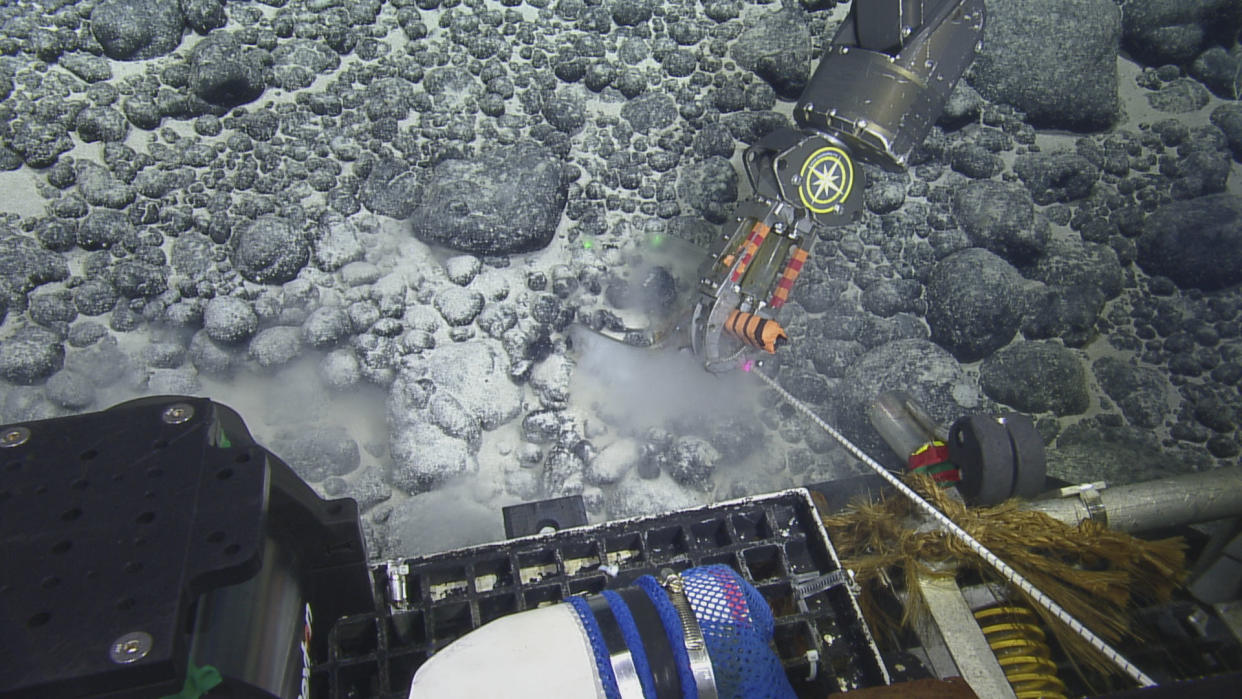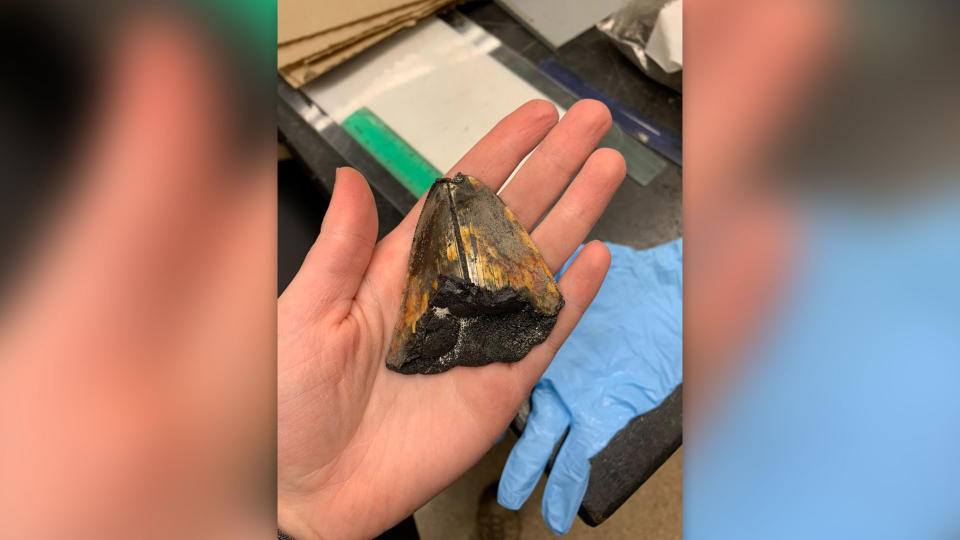Megalodon tooth found on unexplored seamount 10,000 feet below the ocean's surface

A remotely operated submarine was collecting samples on a previously unexplored deep sea mountain when it scooped up a rare megalodon tooth.
The gold-colored tooth, which is 2.7 inches (6.8 centimeters) long, was discovered more than 10,000 feet (3,090 meters) below the surface near the Johnston Atoll in the Pacific Remote Islands Marine National Monument, around 800 miles (1,300 kilometers) south of the Hawaiian Islands.
Researchers described the find in a study published Dec. 14 in the journal Historical Biology. The Ocean Exploration Trust, which led the 2022 expedition that found the tooth, has now released video detailing the events.
The discovery is the first in-situ observation and sampling of a megalodon tooth in the deep sea, meaning researchers found the fossil in its original resting place. Most deep-sea fossils are collected by dragging nets along the ocean floor, so researchers miss out on important information such as their precise location, according to a statement released by the Ocean Exploration Trust on Jan. 4.
Study co-author Nicolas Straube, an associate professor at the University Museum of Bergen in Norway, described it in the statement as an "amazing find."
"The fossil was discovered at a very remote deep-sea locality from which megalodon fossils are rarely documented," Straube said.
Related: Could the megalodon still exist today?
Megalodon (Otodus megalodon) was the largest shark to have ever lived, growing up to at least 49 feet (15 m) long and potentially up to 65 feet (20 m) long. The massive predators were top of the ocean food chain from around 20 million years ago until their extinction around 3.6 million years ago.
Megalodon teeth are relatively common fossils — each megalodon had around 276 teeth, and they lived in oceans around the world. However, most of these fossils are discovered on land near shorelines or rivers rather than in the deep sea, which is rarely explored, according to the statement.
Researchers aboard the Ocean Exploration Trust's Nautilus exploration vessel were collecting samples around the Johnston Atoll in June 2022 to study its deep-sea geology and biology. They deployed a remotely operated vehicle (ROV) called Hercules to film and collect the samples, which were then sent to the University of Rhode Island for processing.
There, researchers found the tooth in one of the samples and suspected it came from a megalodon. Study co-author Dave Ebert, a researcher at the Moss Landing Marine Laboratories in California, later confirmed the tooth came from a megalodon.

RELATED STORIES
—Megalodon was a warm-blooded killer, but that may have doomed it to extinction
—72 million-year-old 'blue dragon' unearthed in Japan is unlike anything we've ever seen, experts say
—Watch ghostly dumbo octopus swim with its massive 'ears' in rare new footage
Upon reviewing the video recorded by Hercules, the researchers also realized the tooth was visibly sticking out of the sand on the seamount before the ROV shoveled it up. Discovering an in-situ tooth on a deep-ocean mountain, or seamount, helps researchers learn more about the gigantic shark's ocean habits.
"This fossil provides us with important insights into the distribution of megalodon," study first author Jürgen Pollersp?ck, a researcher at the Bavarian State Collection of Zoology in Germany, said in the statement.
"The sample indicates that megalodon was not a purely coastal species and that this species migrated across ocean basins similar to many modern-day species such as the great white shark."